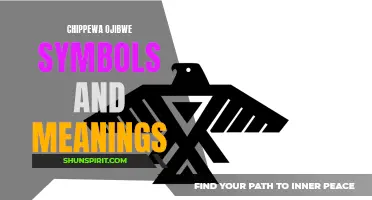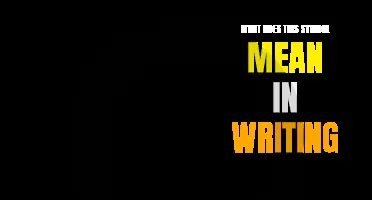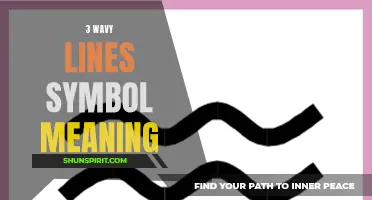
Field weld symbol is a visual representation used in engineering drawings to indicate the type and location of a weld that needs to be made on-site. Welding is a fundamental process in the fabrication and construction industry, and field weld symbols play a crucial role in ensuring accurate and efficient communication between engineers, fabricators, and welders. These symbols provide essential information about the weld size, shape, and joint preparation, allowing the necessary adjustments to be made on-site. Understanding the field weld symbols is essential for any professional involved in welding operations, as it ensures the quality and integrity of the final product.
What You'll Learn
- What is the meaning of a field weld symbol in welding?
- How is a field weld symbol different from a weld symbol?
- Can you explain the different components of a field weld symbol and their meanings?
- What are some common variations or modifications of the field weld symbol and what do they indicate?
- Are there any specific industry standards or specifications for the use of field weld symbols?

What is the meaning of a field weld symbol in welding?
When it comes to the world of welding, there are many symbols and notations that are used to communicate specific instructions and information. One of these symbols is the field weld symbol. This symbol is used to indicate that a weld is to be performed on site, in the field, rather than in a controlled environment such as a workshop or manufacturing facility.
The field weld symbol is typically depicted as a flag that extends from the reference line of the welding symbol. It may also include a tail, which points to the specific location where the weld is to be performed. This symbol is often seen on structural drawings, where it is used to indicate where field welding is required to connect various components of a structure.
The field weld symbol serves as a clear indication to the welder that the designated weld must be performed on site. This is important because field welding poses certain challenges and considerations that are not present in a controlled environment. For example, field welding may be subject to weather conditions and other environmental factors that can affect the quality and integrity of the weld.
Furthermore, field welding often involves working with existing structures or components that may not have been designed with welding in mind. This means that the welder must take extra care to ensure proper preparation and fit-up of the joint to be welded. Field welds may also require additional welding techniques or equipment to accommodate the specific conditions on site.
In addition to indicating the location of the weld, the field weld symbol may also include other important information such as the welding process to be used, the type of filler metal to be used, and any pre-weld or post-weld treatments that are required. This ensures that the welder has all the necessary information and instructions to perform the weld correctly.
Overall, the field weld symbol in welding represents a weld that will be performed on site, in the field, rather than in a controlled environment. It serves as a clear indication to the welder of where the weld is to be performed and provides important information and instructions to ensure that the weld is done correctly. When working with field weld symbols, welders must take into account the specific challenges and considerations associated with field welding to ensure the quality and integrity of the final weld.
The Hidden Symbolism and Deep Meaning Behind the Cobra
You may want to see also

How is a field weld symbol different from a weld symbol?
A weld symbol is a pictorial representation on a drawing that indicates how a weld joint is to be fabricated. It is used in various industries, such as construction, manufacturing, and engineering, to provide clear instructions to the welder on the type and quality of weld required.
On the other hand, a field weld symbol specifically refers to welds that are performed on-site or in the field, rather than in a controlled environment such as a fabrication shop. These field welds are typically done on already assembled structures or equipment, where it may not be possible or practical to perform the welds in a shop setting.
The main difference between a field weld symbol and a regular weld symbol is the addition of a tail on the symbol itself. This tail indicates that the weld is to be performed in the field. The tail also helps in distinguishing between field welds and shop welds.
In addition to the tail, a field weld symbol may also include other specific information related to the field welding process. This may include details such as the weld preparation required, the type of electrode to be used, any special instructions or considerations, and any required post-weld treatments.
Another important aspect of a field weld symbol is the location where the weld is to be performed. Unlike shop welds, which are typically indicated by specific symbols on the drawing, field welds are often denoted by text or specific callouts. This information helps the welder identify the exact location on the structure or equipment where the weld is to be performed.
Field weld symbols are vital in ensuring the proper execution of welds in the field. They provide clear instructions to the welder and help ensure that the weld meets the necessary requirements in terms of quality, strength, and safety. By using field weld symbols, engineers and designers can communicate their weld requirements effectively, even when the welding is done in a less controlled environment.
In summary, a field weld symbol is a specific type of weld symbol used to indicate welds performed in the field. It includes a tail and may contain additional information about the weld process. Field weld symbols are essential in providing clear instructions to welders and ensuring the proper execution of welds in the field.
What Does the Key Symbol on My Phone Mean? Decoding its Significance and Functions
You may want to see also

Can you explain the different components of a field weld symbol and their meanings?
A field weld symbol is used on engineering drawings to represent the type and location of welds in a structure. It provides important information to the welder about the size, shape, and length of the welds that need to be made. Understanding the different components of a field weld symbol is crucial for accurate interpretation and execution of the welds.
There are several main components of a field weld symbol that convey specific meanings:
- Arrow: The arrow is the most prominent part of the weld symbol and indicates the location of the weld. It points towards the joint that needs to be welded. The arrow can be placed above, below, or on either side of the reference line depending on the desired location of the weld.
- Reference Line: The reference line is a horizontal line that intersects with the arrow. It represents the edge or centerline of the joint where the weld needs to be made.
- Weld Size: The size of the weld is denoted by a number placed next to the reference line. This number refers to the weld thickness in millimeters or inches. It represents the minimum size of the weld that needs to be achieved.
- Weld Symbol: The weld symbol is a graphical representation of the type of weld that needs to be made. It can be various shapes, such as a square, triangle, or circle. Each shape represents a different type of weld, such as a fillet weld, groove weld, or plug weld. The weld symbol is placed on the reference line, below the arrow, and indicates the specific type of weld required.
- Tail: The tail of the weld symbol provides additional information about the weld. It can specify the welding process, such as MIG (Metal Inert Gas) or TIG (Tungsten Inert Gas), or provide information about the weld preparation, such as the use of backing bars or chamfers. The tail can also provide details regarding the specification or code that needs to be followed for the weld.
It is important for welders, fabricators, and engineers to understand the different components of a field weld symbol and their meanings. This ensures that the welds are made accurately and in accordance with the design specifications. Any misinterpretation or misunderstanding of the weld symbol can lead to welding defects, compromised structural integrity, and increased project costs. Therefore, it is crucial to accurately interpret and execute the weld symbol to ensure the desired quality and performance of the welded joint.
The Hidden Meanings and Symbolism Behind Lip Piercings
You may want to see also

What are some common variations or modifications of the field weld symbol and what do they indicate?
The field weld symbol is an important part of welding documentation that provides information about the type and location of welds in a structure. It is typically used on drawings to indicate where and how the welds should be performed. While the basic field weld symbol is widely recognized and used, there are also some common variations or modifications that can be used to convey additional information.
One common variation of the field weld symbol is the addition of a tail. This tail is typically a straight line that extends from the main symbol and is used to indicate the specific location of the weld. By adding a tail to the symbol, the welder can clearly identify the exact area where the weld should be performed.
Another variation is the addition of a size dimension to the symbol. This is usually indicated by a number placed next to the symbol. The size dimension indicates the size of the weld, which is typically expressed in inches or millimeters. By including this information, the welder can determine the specific size of the weld that is required.
In some cases, there may also be a need to indicate the type of weld that should be used. For example, a specific welding process or electrode type may be specified. This information can be added to the field weld symbol by using letters or symbols to represent the desired type of weld. This ensures that the welder knows exactly what type of weld should be performed.
In addition to these variations, there are also modifications to the field weld symbol that can indicate special requirements or conditions. For example, a circle or box around the symbol can indicate that the weld should be performed to a specific quality standard or inspection requirement. This helps to ensure that the weld meets the necessary criteria for strength and durability.
Overall, the variations and modifications of the field weld symbol are used to provide additional information to the welder. By including details such as location, size, type, and special requirements, the symbol ensures that the welder knows exactly what is expected and can perform the weld to the necessary specifications. This helps to ensure the overall quality and integrity of the welded structure.
Decoding the Meaning Behind LG Call Log Symbols: What Do They Really Stand For?
You may want to see also

Are there any specific industry standards or specifications for the use of field weld symbols?
Field weld symbols are utilized in the engineering and construction industries to communicate information about the type of weld that is required for a particular joint or connection. These symbols are commonly used on blueprints and engineering drawings to provide clarity and consistency in the welding process. While there are no specific industry standards or specifications for field weld symbols, there are general guidelines and practices that are widely followed.
One of the key factors in the use of field weld symbols is ensuring that they are easy to understand and interpret. This is especially important for the individuals who will be performing the welds, as they need to be able to accurately determine the type of weld and the specific requirements for each joint. Therefore, it is common practice to use standardized symbols that are recognized and understood throughout the industry.
In terms of the design of field weld symbols, there are several common elements that are used to convey specific information. These elements may include the shape of the symbol, the size and position of the symbol, and any additional markings or annotations that are used to provide further clarification. It is important to follow these design principles to ensure that the symbols are clear and unambiguous.
Additionally, field weld symbols should also conform to any applicable welding codes or standards that are relevant to the project. For example, if the project is subject to the American Welding Society (AWS) codes, then the symbols should be consistent with the requirements outlined in these codes. This helps to ensure that the welds are performed in accordance with the appropriate standards and specifications.
Furthermore, it is important to note that while there may not be specific industry standards for field weld symbols, there are a variety of resources and reference materials available that provide guidance on their use. These resources may include welding textbooks, guides, and industry best practice documents. It is recommended to consult these resources to ensure that the field weld symbols are correctly utilized.
In conclusion, while there are no specific industry standards or specifications for field weld symbols, there are general guidelines and practices that are widely followed. These guidelines include using standardized symbols that are easy to understand and interpret, following design principles to ensure clarity and consistency, conforming to applicable welding codes or standards, and consulting relevant resources for guidance. By adhering to these principles, engineers and welders can effectively communicate the requirements for each weld joint and ensure that the welds are performed in accordance with the appropriate standards.
Understanding the Deep Symbolism and Meaning of the Antahkarana Symbol
You may want to see also
Frequently asked questions
The field weld symbol is a graphical symbol used in engineering drawings to indicate that a weld is to be performed in the field, or on-site, rather than in a factory or shop environment. It is typically used when a welded connection needs to be made after the prefabrication of a component or structure.
Question 2: How is a field weld symbol represented on a drawing?
Question 3: What are the advantages of using a field weld symbol?
Question 4: Are there any limitations or restrictions when using a field weld symbol?







